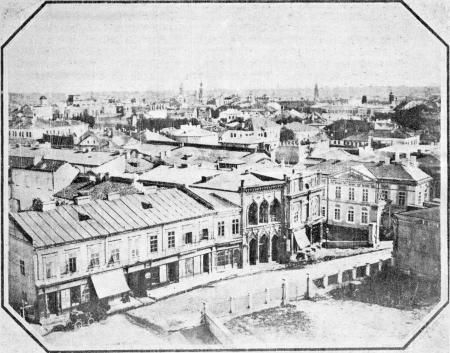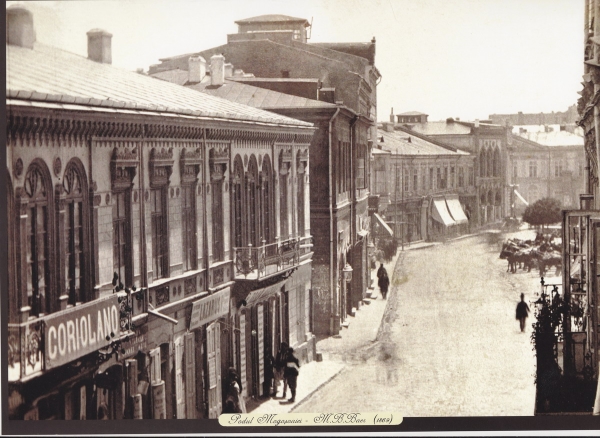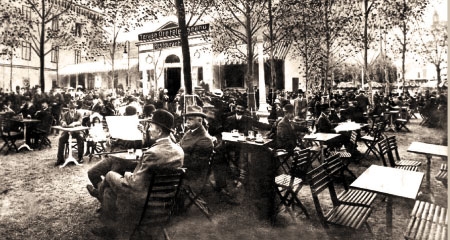Bucharest's Bridges #2 - Podul Mogosoaiei Traditional Geocache
Bucharest's Bridges #2 - Podul Mogosoaiei
-
Difficulty:
-

-
Terrain:
-

Size:  (other)
(other)
Related Web Page
Please note Use of geocaching.com services is subject to the terms and conditions
in our disclaimer.
This is not the kind of "bridge" you may expect
Sure, you can go straight to the cache location, but please take your time to look at the photos and rediscover some once magnificent places in our town.
Between 1692 and 1700, a paved road which linked the centre of Bucharest to the Mogosoaia Palace of Constantin Brâncoveanu was built and it was named "Podul Mogosoaiei", being made out of oak wood. Most roads in the Balkans at that time became muddy in the spring and autumn, and the wood prevented this.

Podul Mogosoaiei

Podul Mogosoaiei in 1874
Can you see that this photo shows the same buildings as the previous photo, only from a different angle ?
Consequently the road was one of the most important construction works of the area and a source of pride to Bucharesters. The area surrounding the road became the most fashionable part of Bucharest: 35 boyar houses were located on the road itself in 1775.

Podul Mogosoaiei in 1869
Can you also recognise the buildings in this photo as the ones in the photos before ?
Podul Mogosoaiei was the first street in Bucharest to be illuminated with candles during the night, starting July 1814.

Piata Teatrului
The wood was not a very sturdy material and often it was in a bad state, despite being repaired several times (including in 1793 and 1814).
In 1842 the road was paved with cobblestone. It was later upgraded to asphalt. The road was renamed "Calea Victoriei" on October 12, 1878, following the Romanian victory in the Independence War of 1877-1878.

Calea Victoriei
During the Russian occupation of the Danubian Principalities, in the aftermath of the Russo-Turkish War (1828-1829), an extension from Piata Victoriei northward was built by Pavel Kiseleff, the commander of the occupation troops, and is today named after him. You can also discover a lot of special places, by seeking caches in that area, and there are quite some.
Now back to the cache... The box is located close to the Bucharest Telephone Palace. Actually, in all the photos the spot where the cache is hidden can be seen; sure, none or few of the buildings or street furniture are still there, especially those of old photos (the most recent photo however closely matches the current layout of the area), but the location is visible in all photos above.
You should try this : once you find the cache, can you spot the location on these photos ?
Designed on behalf of SART by the Romanian architect of Dutch origin Edmond Van Saanen Algi and built over the course of about 20 months in 1931–1933, it was the first major modernist building on Bucharest's Calea Victoriei, the street of which Tudor Octavian wrote, "this is how the whole of Bucharest would look if we had been allowed..., if its builders had been clever enough..." It was constructed on the former site of the Otetelesanu Mansion, which had been, since the turn of the century, home to a terrace bar (Terasa Otetelesanu), a coffee house and a beer saloon, competing with Casa Capsa for the custom of Bucharest's elite from its location next to the old Romanian National Theatre.

Terasa Otetelesanu
Hope you will enjoy the time travel tour in the interwar years and before.
Please bring a pen; cache has only a logbook.
All images and original text (C) respective owners; images are found on internet sites.
Additional Hints
(Decrypt)
Yrsg fvqr bs gur ragenapr, haqre.